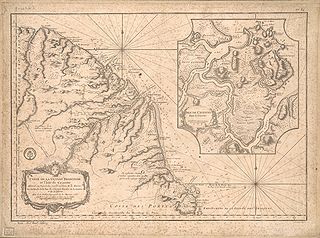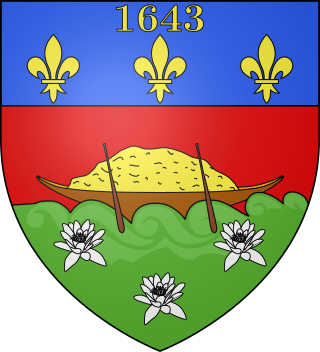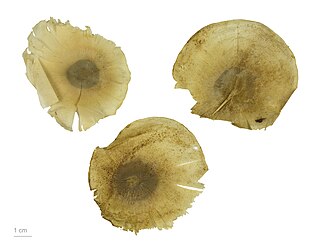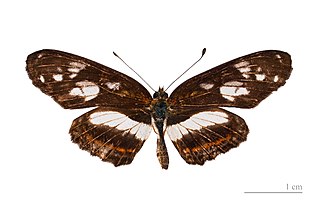
The history of French Guiana dates back to the period prior to European colonization. Prior to the arrival of the first Europeans, there was no written history in the territory. It was originally inhabited by a number of Native American peoples, among them the Kalina (Caribs), Arawak, Galibi, Palikur, Teko, Wayampi, and Wayana. The first Europeans arrived in the expeditions of Christopher Columbus, shortly before 1500.

French Guiana is not a separate territory but is both an overseas région and overseas department of France, with the same government institutions as areas on the French mainland. The administrative center is Cayenne.

Transport in French Guiana consists of transport by road, boat, bus, and airplane. There is a railway line within the Guiana Space Centre to transport spacecraft. The road network is mainly concentrated in the coastal region. The interior of Guiana is accessed by plane or boat. There is one main airport, however there are several smaller airstrips in the interior.

The Guiana Shield is one of the three cratons of the South American Plate. It is a 1.7 billion-year-old Precambrian geological formation in northeast South America that forms a portion of the northern coast. The higher elevations on the shield are called the Guiana Highlands, which is where the table-like mountains called tepuis are found. The Guiana Highlands are also the source of some of the world's most well-known waterfalls such as Angel Falls, Kaieteur Falls and Cuquenan Falls.

Cayenne is the capital city of French Guiana, an overseas region and department of France located in South America. The city stands on a former island at the mouth of the Cayenne River on the Atlantic coast. The city's motto is "fert aurum industria", which means "work brings wealth". Cayenne is the largest Francophone city of the South American continent.

Equinoctial France was the contemporary name given to the colonization efforts of France in the 17th century in South America, around the line of Equator, before "tropical" had fully gained its modern meaning: Equinoctial means in Latin "of equal nights", i.e., on the Equator, where the duration of days and nights is nearly the same year round. The settlement was made in what is now known as the Bay of São Luis and lasted for 3 years.

The Guianas, also spelled Guyanas or Guayanas, is a region in north-eastern South America. Strictly, the term refers to the three Guyanas: Guyana, Suriname and French Guiana, formerly British, Dutch and French Guyana. Broadly it refers to the South American coast from the mouth of the Oronoco to the mouth of the Amazon.

The Oyapock or Oiapoque is a 403-kilometre (250 mi) long river in South America that forms most of the border between the French overseas department of French Guiana and the Brazilian state of Amapá.

Pouteria is a genus of flowering trees in the gutta-percha family, Sapotaceae. The genus is widespread throughout the tropical Americas, with outlier species in Cameroon and Malesia. It includes the canistel, the mamey sapote, and the lucuma. Commonly, this genus is known as pouteria trees, or in some cases, eggfruits.

Aspidosperma is a genus of flowering plant in the family Apocynaceae, first described as a genus in 1824. It is native to South America, Central America, southern Mexico, and the West Indies.

Lecythis is a genus of woody plant in the Lecythidaceae family first described as a genus in 1758. It is native to Central America and South America. Several species produce edible seeds and referred to by a variety of common names including paradise nut, monkey pot, cream nut, and sapucaia nut.

Micropholis is group of trees in the family Sapotaceae, described as a genus in 1891.

The Palikur are an indigenous people located in the riverine areas of the Brazilian state of Amapá and in French Guiana, particularly in the south-eastern border region, on the north bank of the Oyapock River. The Palikur Nation, or naoné, is Arawak-speaking and socially organized in clans. In 2015, the estimated population was 2,300 people of which 1,400 lived in Brazil and 900 in French Guiana.

The following outline is provided as an overview of and topical guide to South America.

French Guiana is an overseas department and region of France located on the northern coast of South America in the Guianas and the West Indies. Bordered by Suriname to the west and Brazil to the east and south, French Guiana covers a total area of 84,000 km2 (32,000 sq mi) and a land area of 83,534 km2 (32,253 sq mi), and is inhabited by 295,385 people.

Eueides isabella, the Isabella's longwing or Isabella's heliconian, is a species of nymphalid butterfly, belonging to the Heliconiinae subfamily.

Indigenous peoples in Suriname, Native Surinamese, or Amerindian Surinamese, are Surinamese people who are of indigenous ancestry. They comprise approximately 3.5% of Suriname's population of 612,985.

Eresia clio, the common crescent or Clio crescent, is a butterfly of the family Nymphalidae. It was described by Carl Linnaeus in 1758. It is found from southern Mexico to Peru, Bolivia, the Guyanas and Brazil. The habitat consists of forest edges with low vegetation.

Eresia nauplius, the Peruvian crescent or Nauplius crescent, is a butterfly of the family Nymphalidae. It was described by William Chapman Hewitson in 1852. It is found in most of the Amazon region. The habitat consists of forest edges with low vegetation, including river banks, forest clearings, glades and roadsides.

Eresia lansdorfi, the false erato or Lansdorf's crescent, is a butterfly of the family Nymphalidae.


















